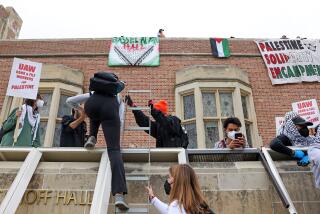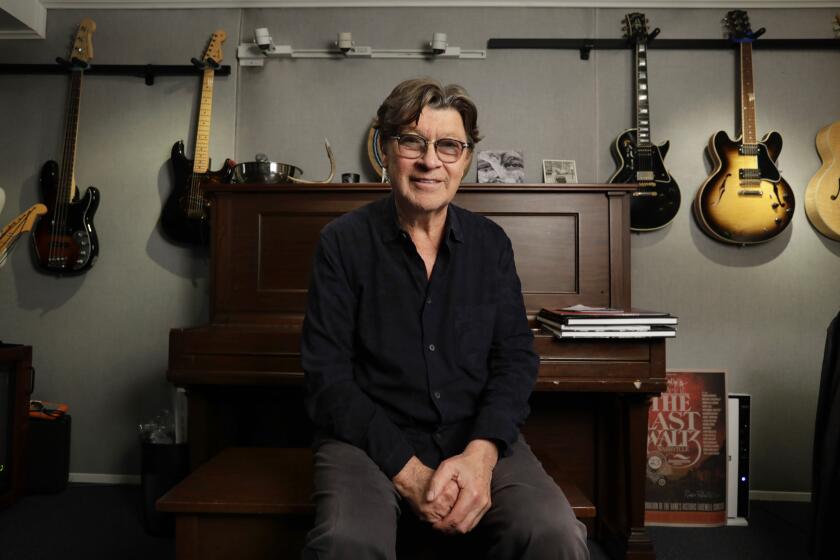ANAHEIM : Old House Gets a New Lease on Life
When the Kuchel-Melrose House was built in 1860, Sarah Ament wasn’t even a gleam in her great-great-great-grandfathers’ eyes.
But that didn’t stop the 8-year-old Adelaide Price Elementary School third-grader from appreciating the historic home as she toured it Wednesday.
The house--one of the two oldest homes in the city--is being restored by the Anaheim Historical Society and was recently reopened for tours.
“It’s really very nice and it’s getting very pretty,” Sarah said as she stood outside the six-room house at the corner of Adele and Emily streets downtown. “The tiles are all real pretty. But it would have been hard to live here back then (in 1860). I like TV.”
The house was built for Conrad Kuchel, president of the German grape-growing company that founded the city. It was saved from the wrecking ball by Andy Deneau and his mother, Rose Deneau, seven years ago, and they are organizing its restoration.
The home and the nearby Mother Colony House are the two surviving structures of the four that were built for the settlement on what was then a barren wilderness, Andy Deneau said. Mother Colony is generally credited with being the city’s first house, but Andy Deneau said that might not be the case.
“The two houses were being built at the same time, so I guess it depends who finished nailing first, and nobody knows who that was,” Deneau said.
A few historic firsts have occurred at the Kuchel-Melrose House, he said.
In 1860, shortly after the house was completed as part of a 20-acre ranch, the German settlers gathered there for “Erntedankfest,” or harvest fest, to celebrate the end of the area’s first successful growing season. That event gave the house a second name, “Harvest House.”
In 1868, a group of men gathered in the living room to begin planning the area’s secession from Los Angeles County. That particular effort failed, although it was the seed for the creation of Orange County 20 years later, Deneau said.
After Conrad Kuchel died, his daughter Mary moved into the house with her husband, Richard Melrose. It stayed in the family until 1912, when it was sold. It has been resold numerous times since, Deneau said.
He said he first took real notice of the house in the 1950s when he lived a block away and delivered newspapers in the area. He said it was slightly run down at the time and everyone had apparently forgotten that the house had been something special. Over the years it deteriorated further, he said, and by 1985 there were plans to tear it down and replace it with a four-unit apartment building.
“There were holes in the roof and the windows were boarded up,” Deneau said. “The west side of the house was nine inches lower than the east side, so you could lay a bowling ball at one end and it would roll to the other. The back yard was full of trash. It was an eyesore.”
Even though neighbors of the house were unaware of its historic significance, they knew they didn’t want it replaced by apartments. So one neighbor, Diane Marsh, did some research and discovered the house’s history, Deneau said. He and his mother then appealed to the property owner, who agreed to sell it to them. They then donated the house to the historical society, which decided to restore it and then resell it next spring to someone willing to preserve it.
The new tenants will have to grow accustomed to some of the house’s oddities, however. There are no closets, for instance, because, as Andy Deneau pointed out, clothes hangers hadn’t been invented in 1860. Clothes were stored in drawers, hung on hooks and strewn on floors, he said.
The house does have a bathroom, however, which was added about 1900.
“The home is nothing fancy, just solid,” Deneau said.
More to Read
Start your day right
Sign up for Essential California for news, features and recommendations from the L.A. Times and beyond in your inbox six days a week.
You may occasionally receive promotional content from the Los Angeles Times.






